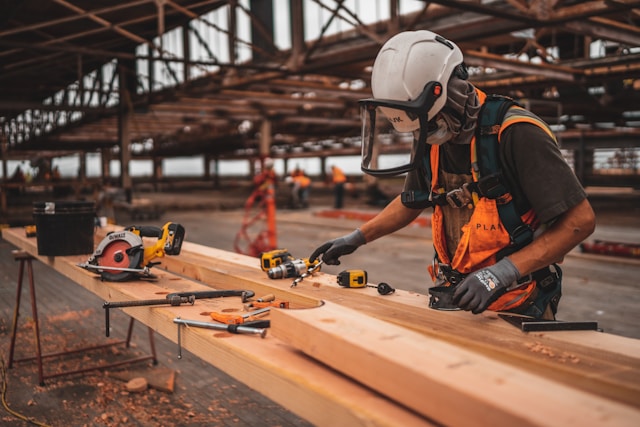Shortage of construction workers: Canada could need more than 500,000
TORONTO – There is a big shortage of construction workers in Canada: solving it, seems to be the only key to increasing housing supply. The growing labor shortage in the construction sector is cited by the Canada Mortgage and Housing Corp. as one of three factors contributing to longer construction times, in a housing supply report released last month; workers retire faster than they are replaced; and this challenge was exacerbated by the pandemic, when some construction workers changed careers or retired early rather than returning to the industry when the economy reopened.
Jordan Thomson, senior manager of infrastructure consulting at KPMG in Canada, explains that the industry faces the dual challenge of replacing retiring workers and, at the same time, trying to grow the sector to meet the growing need for case of Canada.
Kevin Lee, CEO of the Canadian Home Builders’ Association, estimates that 22% of residential construction workers will retire in the next decade. While the labor shortage is an ongoing challenge, as he said, its effects have been modified somewhat over the past year as high financing costs have led to a slowdown in demand from potential buyers in many markets. But he said a recovery could bring “more strain” on the sector. “Once people are able to afford to buy and get moving and the market starts to turn around, at that point, we will really see the labour shortage be more and more of a crunch” Lee said.
According to a report by RBC deputy chief economist Robert Hogue, Canada may need more than 500,000 additional construction workers on average to build all the homes needed between now and 2030. The report, titled “The Great Rebuild,” predicts that the pace of housing construction in Canada would need to increase by almost half just to accommodate future population growth. Hogue offered seven ideas to solve Canada’s housing shortage, the first of which is to aggressively expand the construction industry’s labor pool, saying “all avenues should be pursued to get more people working in the sector” including prioritizing construction skills among new immigrants, setting ambitious goals for enrollment in skilled trade schools, and incentivizing older construction workers to stay in the workforce longer. “We need to build a lot more,” he said.
The federal budget presented Tuesday recognizes that skilled labor shortages contribute to “entrenched structural barriers” that hold back the supply of new homes and increase affordability pressures. The federal government has said it will encourage more people to pursue careers in skilled trades and break down barriers to the recognition of foreign credentials, particularly for construction workers, while also highlighting the creation of apprenticeship opportunities “to train and recruit the next generation” of skilled workers.
While some strategies under development, such as the federal government’s, are geared to the long term, prioritizing immigrants with skilled backgrounds could give the sector a quicker boost, said Mary Van Buren, president of the Canadian Construction Association. Finding solutions is vital not only for the immediate need – the association has 52,000 active job openings – but to help Canada compete with other countries for skilled workers. In fact, Van Buren noted that Canada is not alone in trying to solve the construction labor shortage: “The U.S., U.K., Germany, Japan, Italy, France, they’re facing a similar challenge, and all but Japan are strong reliers on immigration”.
Source: The Canadian Press
Photo by Jeriden Villegas on Unsplash



